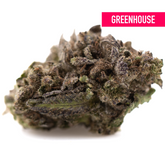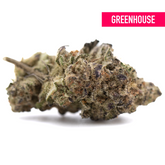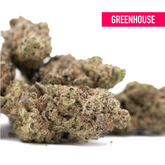Indica vs Sativa Effects: How Each Strain Affects Your Body and Mind

The age-old debate between indica and sativa strains continues to shape how consumers choose their cannabis products. Walk into any dispensary, and you'll hear budtenders describing indica as the "in-da-couch" strain that melts away stress, while sativa supposedly energizes and sparks creativity. But here's what most people don't realize: these traditional classifications tell only part of the story, especially when it comes to understanding THCa effects on body and mind.
The reality is far more nuanced than the simple indica-versus-sativa dichotomy suggests. Modern cannabis science reveals that effects depend on a complex interplay of cannabinoids, terpenes, individual biology, and consumption factors. While classic strain categories provide a helpful starting point, they shouldn't be your only guide to predicting how a particular product will affect you.
This comprehensive exploration will dive deep into the science behind cannabis effects, examining how different strains interact with your endocannabinoid system and why THCa psychoactive conversion plays a crucial role in your experience. We'll also address why that "couch-lock" indica might sometimes leave you energized, or why a supposed "wake and bake" sativa could have you reaching for a pillow.
Understanding these complexities empowers you to make more informed choices about your cannabis consumption, whether you're seeking therapeutic relief, recreational enjoyment, or exploring the fascinating world of cannabinoid science.
Traditional Effect Profiles: The Foundation of Cannabis Culture
Classic Indica Effects: The Body-Centered Experience
Indica strains have earned their reputation as the "nighttime" choice for good reason. Traditionally associated with cannabis plants that originated in the harsh mountainous regions of Afghanistan, Pakistan, and India, indica varieties typically produce what consumers describe as a "body high." This experience often includes:
Physical Relaxation and Sedation The hallmark of indica effects is deep physical relaxation that seems to melt tension from your muscles. Users frequently report feeling their body "sink" into furniture, leading to the popular phrase "couch-lock." This sedating quality makes indica strains particularly appealing for evening use, especially for those dealing with chronic pain, muscle spasms, or insomnia.
Pain and Inflammation Relief Many indica users turn to these strains specifically for their analgesic properties. The THCa indica body high often provides substantial relief from various types of pain, from arthritis and fibromyalgia to post-workout soreness. This therapeutic effect likely stems from the complex interaction between cannabinoids and the body's pain receptors.
Appetite Stimulation The classic "munchies" effect is strongly associated with indica consumption. This appetite enhancement can be therapeutic for individuals dealing with eating disorders, chemotherapy side effects, or other medical conditions that suppress appetite.
Sleep Promotion Perhaps the most sought-after indica effect is its ability to promote restful sleep. Many users rely on indica strains as a natural alternative to pharmaceutical sleep aids, finding that the gradual onset of drowsiness feels more natural and doesn't leave them groggy the next morning.
Classic Sativa Effects: The Mind-Expanding Journey
Sativa strains, traditionally originating from equatorial regions like Colombia, Mexico, Thailand, and Southeast Asia, have built their reputation around cerebral effects and energizing properties. The classic sativa experience typically includes:
Mental Stimulation and Creativity Sativa enthusiasts often describe enhanced creativity, racing thoughts, and increased ability to engage in artistic or intellectual pursuits. Many artists, writers, and musicians gravitate toward sativa strains for this reason, finding that THCa sativa mental effects can unlock new perspectives and ideas.
Energy and Motivation Unlike the sedating qualities of indica, sativa strains are renowned for providing energy and motivation. Users often report feeling more inclined to tackle projects, engage in social activities, or pursue physical exercise after consumption.
Euphoria and Mood Enhancement The uplifting nature of sativa effects often includes feelings of euphoria, happiness, and general well-being. This mood enhancement makes sativa strains popular choices for social gatherings and daytime activities.
Enhanced Focus and Productivity Many sativa users find that certain strains can improve focus and concentration, leading to increased productivity in work or creative endeavors. However, this effect can be highly dose-dependent and varies significantly between individuals.
Why These Generalizations Developed
The indica-sativa classification system developed during an era when cannabis science was in its infancy. Early cultivators and consumers noticed consistent patterns between plant morphology and effects. Indica plants, with their short, bushy stature and broad leaves, seemed to produce more sedating effects. Sativa plants, tall and thin with narrow leaves, appeared to generate more energizing experiences.
These observations led to the development of a simple classification system that served the cannabis community well for decades. However, this binary approach emerged before we understood the complex chemistry behind cannabis effects, particularly the role of THCa cannabinoid effects and how they interact with other plant compounds.
The widespread acceptance of these categories also stemmed from practical necessity. In an era of prohibition, consumers needed simple ways to communicate about effects without extensive scientific knowledge. Budtenders could easily explain that indica would help with sleep while sativa would provide energy, creating a user-friendly system that persists today.

The Science Behind Effects: Beyond Simple Classifications
The Entourage Effect: Terpenes Take Center Stage
Modern cannabis science has revealed that effects result from far more than just THC content or strain classification. The entourage effect describes how various cannabis compounds work synergistically to produce unique experiences. Terpenes, the aromatic compounds found in many plants including cannabis, play a particularly crucial role in shaping effects.
Myrcene: The Sedating Terpene Found in high concentrations in many indica-dominant strains, myrcene is known for its sedating and muscle-relaxing properties. This terpene, also found in mangoes and lemongrass, may explain why many traditional indica strains produce couch-lock effects. Strains with myrcene concentrations above 0.5% typically produce more sedating experiences regardless of their indica or sativa classification.
Limonene: The Mood Elevator This citrusy terpene, commonly found in lemon peels and many sativa strains, is associated with mood enhancement and stress relief. Limonene may also improve the absorption of other cannabinoids, potentially intensifying overall effects.
Pinene: The Alertness Enhancer As its name suggests, pinene provides the fresh scent of pine needles and is associated with increased alertness and memory retention. This terpene may counteract some of THC's memory-impairing effects, making it particularly valuable in sativa-dominant strains used for daytime activities.
Linalool: The Calming Compound Found in lavender and many indica strains, linalool provides calming and anti-anxiety effects. This terpene may work synergistically with cannabinoids to enhance the relaxing properties traditionally associated with indica consumption.
Understanding THCa Decarboxylation and Its Impact
One of the most important concepts in cannabis science is THCa decarboxylation effects. Raw cannabis plants contain primarily THCa (tetrahydrocannabinolic acid), which is non-psychoactive in its natural state. Only when exposed to heat does THCa convert to THC, the compound responsible for cannabis's psychoactive effects.
This conversion process significantly impacts the user experience. When you compare THCa vs activated THC, you're looking at two entirely different compounds with distinct properties:
THCa Properties:
- Non-psychoactive in raw form
- Potential anti-inflammatory effects
- May support neuroprotection
- Doesn't produce the "high" associated with THC
Activated THC Properties:
- Psychoactive and intoxicating
- Binds to CB1 receptors in the brain
- Produces euphoria, altered perception, and other classic cannabis effects
- Responsible for both therapeutic and recreational experiences
The method and completeness of decarboxylation can significantly influence your experience. Vaporizing at different temperatures, for example, can selectively activate certain compounds while leaving others unchanged, allowing for more precise control over effects.
Cannabinoid Ratios: The Chemical Fingerprint
Beyond THC content, the ratio of various cannabinoids plays a crucial role in determining effects. CBD, CBG, CBN, and other cannabinoids each contribute unique properties that can enhance, modify, or counteract THC's effects.
THC:CBD Ratios Strains with higher CBD content often produce more balanced effects, with CBD potentially reducing THC-induced anxiety while maintaining therapeutic benefits. A 1:1 THC:CBD ratio might provide pain relief without intense psychoactive effects, while high-THC, low-CBD strains typically produce more pronounced cerebral effects.
CBN's Sedating Influence Cannabinol (CBN) forms when THC degrades over time and is strongly associated with sedating effects. Aged cannabis or products specifically enhanced with CBN often produce more indica-like experiences regardless of the original strain classification.
CBG's Energizing Potential Cannabigerol (CBG) is sometimes called the "mother cannabinoid" and may provide energizing effects that complement traditional sativa experiences. Understanding these THCa therapeutic effects and how they interact helps explain why some strains break traditional indica-sativa expectations.
Individual Endocannabinoid System Variations
Perhaps the most important factor in cannabis effects is individual biological variation. Each person's endocannabinoid system (ECS) is unique, influenced by genetics, lifestyle, health status, and previous cannabis exposure.
Genetic Variations Some people naturally produce more endocannabinoids, while others have variations in receptor density or distribution. These genetic differences can dramatically impact how someone responds to the same strain and dosage.
Receptor Sensitivity CB1 and CB2 receptor sensitivity varies between individuals and can change over time. Someone with highly sensitive receptors might experience strong effects from small doses, while others require substantially more cannabis to achieve similar results.
Metabolic Differences How quickly your body processes cannabinoids affects both the intensity and duration of effects. Fast metabolizers might experience shorter, less intense effects, while slow metabolizers could find that the same dose produces overwhelming or long-lasting experiences.

Factors That Influence Your Cannabis Experience
Dosage and Consumption Methods: The Foundation of Effects
The relationship between dosage and effects isn't linear with cannabis. Understanding THCa consumption methods and their impact on your experience is crucial for achieving desired results.
Smoking and Vaporizing These inhalation methods provide rapid onset, typically within minutes, making it easier to titrate dosage. However, effects also tend to be shorter-lived, usually lasting 1-3 hours. Vaporizing offers more precise temperature control, allowing you to selectively activate different compounds.
Edibles and Tinctures Oral consumption produces longer-lasting effects (4-8 hours) but with delayed onset (30 minutes to 2 hours). The liver converts THC to 11-hydroxy-THC during digestion, which can produce more intense and different effects than inhaled cannabis.
Topical Applications While topical cannabis products typically don't produce psychoactive effects, they can provide localized relief for pain and inflammation. This method allows you to experience some therapeutic benefits without the mental effects.
Sublingual Products Tinctures and strips absorbed under the tongue offer a middle ground between smoking and edibles, with onset times of 15-45 minutes and effects lasting 2-4 hours.
The Critical Role of Set and Setting
Your mindset (set) and environment (setting) profoundly influence cannabis effects, sometimes overriding strain-specific expectations entirely.
Mental State Impact Approaching cannabis consumption with anxiety or negative expectations can amplify unpleasant effects regardless of strain type. Conversely, a positive, relaxed mindset often enhances enjoyable aspects of the experience.
Environmental Influences Your physical environment significantly shapes your experience. The same strain might produce energizing effects in a social, stimulating environment but cause drowsiness in a quiet, comfortable setting.
Social Context Cannabis consumed alone often produces different effects than when used socially. Group dynamics, conversation, and shared activities can influence whether you experience the energizing or relaxing aspects of any given strain.
Tolerance and Experience Level Considerations
Your cannabis history and tolerance level dramatically affect how strains impact you, often overriding traditional indica-sativa expectations.
Tolerance Development Regular cannabis users often find that their tolerance affects strain selection and THCa dosage effects. What produces strong sedation in a novice user might provide subtle relaxation for someone with high tolerance.
Cross-Tolerance Effects Tolerance to one cannabinoid often affects sensitivity to others. Heavy THC users might find that they need higher concentrations of other cannabinoids to achieve desired effects.
Tolerance Breaks Taking breaks from cannabis consumption can reset tolerance levels, often making familiar strains feel completely different upon return. This phenomenon explains why the same strain might produce varying effects over time.
Timing and Activity Influence
When and how you consume cannabis significantly impacts your experience, regardless of strain classification.
Circadian Rhythm Considerations Your body's natural rhythms affect cannabis sensitivity. Many people find they're more sensitive to cannabis effects in the evening, which might make a typically energizing sativa feel more sedating when consumed late in the day.
Activity Pairing The activities you engage in during cannabis consumption can reinforce or counteract strain-typical effects. Physical activity might energize you despite consuming an indica, while passive activities like watching television might enhance sedating effects even with sativa strains.
Meal Timing Consuming cannabis on an empty stomach often produces faster, more intense effects, while eating beforehand can delay and moderate the experience. This timing consideration affects both onset and intensity regardless of strain type.

Real-World Effect Variations: When Expectations Meet Reality
Why Indica Doesn't Always Sedate
Despite decades of classification suggesting that indica strains universally produce sedating effects, real-world experience tells a more complex story. Several factors can cause traditionally "relaxing" indica strains to produce unexpected energizing effects.
Terpene Profile Variations Modern breeding has created indica-dominant strains with terpene profiles that deviate from traditional expectations. An indica strain high in pinene and limonene might produce more uplifting effects despite its genetic classification.
Harvest Timing Impact The timing of harvest significantly affects cannabinoid and terpene profiles. Indica plants harvested early in their flowering cycle might produce more energizing effects due to lower CBN content and different terpene ratios.
Individual Biochemistry Some people's endocannabinoid systems respond differently to indica strains. Genetic variations in receptor sensitivity or metabolic pathways can cause traditionally sedating strains to produce alertness or even anxiety.
Dosage-Dependent Effects Low doses of indica strains sometimes produce energizing effects, while higher doses provide the expected sedation. This biphasic response demonstrates why simple strain classifications can be misleading without considering dosage.
Environmental and Set Factors Consuming indica in stimulating environments or with energizing activities can override the strain's natural sedating tendencies. Context often proves more powerful than genetics in determining actual effects.
When Sativa Makes You Tired
Equally surprising to many consumers is when sativa strains produce sedating or anxiety-inducing effects instead of the expected energy and creativity boost.
High-Myrcene Sativas Some sativa strains contain significant amounts of myrcene, the terpene associated with sedation. These strains might provide initial mental stimulation followed by physical relaxation and drowsiness.
THC Sensitivity and Overwhelming Effects High-THC sativa strains can overwhelm sensitive users, leading to anxiety that manifests as fatigue or the desire to rest. This reaction is particularly common among new users or those with low tolerance.
Come-Down Effects Even energizing sativa strains eventually lead to a "come-down" period where users feel tired. Consuming sativa later in the day might coincide with this natural decline, creating the impression that the strain itself is sedating.
Hybrid Genetics Many modern "sativa" strains contain significant indica genetics due to decades of crossbreeding. These hybrid influences can introduce sedating elements that contradict the sativa label.
Individual Reverse Reactions A small percentage of users experience paradoxical reactions to cannabis, where stimulating strains cause sedation and sedating strains provide energy. This individual variation highlights the importance of personal experimentation over relying solely on strain classifications.
The Reality of Hybrid Effects and Unpredictability
Modern cannabis cultivation has created thousands of hybrid strains that blend indica and sativa genetics in countless combinations. These hybrids often produce effects that don't fit neatly into traditional categories.
Balanced Hybrids 50/50 indica-sativa hybrids might provide simultaneous mental stimulation and physical relaxation, creating unique experiences that change throughout the session. Users might feel energized initially, then transition to more relaxed states.
Dominant Hybrid Variations Even slightly indica-dominant or sativa-dominant hybrids can produce effects that shift based on dosage, timing, and individual factors. A 60/40 sativa-dominant hybrid might lean more heavily toward its indica genetics under certain circumstances.
Phenotype Variations Even within the same strain, different phenotypes (genetic expressions) can produce varying effects. Two plants from identical seeds might express different terpene profiles, leading to different user experiences despite sharing the same name and genetic background.
Breeding Complexity Modern strains often contain genetics from multiple landrace varieties, creating complex cannabinoid and terpene profiles that don't align with simple indica-sativa predictions. These multi-generational hybrids can express unexpected characteristics.

Practical Applications: Making Informed Cannabis Choices
Developing Your Personal Cannabis Profile
Rather than relying solely on indica-sativa classifications, developing a personal understanding of how different factors affect your cannabis experience leads to more satisfying outcomes.
Track Your Responses Keep detailed notes about different strains, including dosage, consumption method, setting, and effects experienced. Look for patterns in terpene profiles, cannabinoid ratios, and consumption circumstances that consistently produce desired effects.
Experiment Systematically Try the same strain under different conditions to understand how external factors influence your experience. Test different dosages, consumption methods, and settings to build a comprehensive picture of how each variable affects you.
Focus on Chemistry Over Classification Pay attention to lab results showing cannabinoid and terpene profiles rather than just indica-sativa labels. Learn to identify the specific compounds that produce your preferred effects.
Consider Your Goals Define what you want from cannabis consumption – whether it's pain relief, creativity enhancement, sleep improvement, or recreational enjoyment – and choose products based on their chemical composition rather than their classification.
Understanding Product Labels and Lab Results
Modern cannabis products often include detailed lab analyses that provide much more useful information than simple strain classifications.
Cannabinoid Profiles Look for products that list percentages of THC, CBD, CBG, CBN, and other cannabinoids. Understanding these ratios helps predict effects more accurately than strain names alone.
Terpene Information Quality products include terpene profiles showing the most prominent aromatic compounds. Learn to recognize terpenes that consistently produce effects you enjoy.
Harvest and Processing Dates Fresher products typically provide more accurate representations of intended effects, as cannabinoids and terpenes can degrade over time.
Testing Standards Choose products from reputable sources that provide comprehensive testing for potency, pesticides, heavy metals, and microbials. Quality assurance affects both safety and effect consistency.
Frequently Asked Questions
Q: Do indica and sativa classifications have any scientific validity? A: While these classifications reflect some genetic and morphological differences between cannabis varieties, they don't reliably predict effects. Modern research shows that terpene profiles and cannabinoid ratios are much better predictors of how a strain will affect you.
Q: Why do I get different effects from the same strain at different times? A: Multiple factors influence cannabis effects, including your current health status, stress levels, recent meals, sleep quality, and environment. Your endocannabinoid system's state fluctuates daily, affecting how you respond to the same products.
Q: How important is THCa content compared to THC in determining effects? A: THCa content matters primarily because it determines the maximum possible THC levels after decarboxylation. However, the conversion efficiency depends on consumption method and temperature, so THCa vs activated THC ratios can vary significantly in your actual experience.
Q: Can I predict how a strain will affect me based on its terpene profile? A: Terpene profiles provide much better predictive value than indica-sativa classifications, but individual responses still vary. Use terpene information as a guide while tracking your personal responses to different profiles.
Q: Why do some people have opposite reactions to what strains are supposed to do? A: Individual endocannabinoid system variations, genetic differences in receptor sensitivity, and unique metabolic pathways can cause paradoxical reactions. This highlights why personal experimentation trumps general strain descriptions.
Q: How does tolerance affect the indica vs sativa experience? A: High tolerance often diminishes strain-specific differences, making indica and sativa effects more similar. Regular users might need to focus more on terpene profiles and consumption methods to achieve distinct effects.
Q: Are there any reliable ways to enhance specific effects from cannabis? A: Combining cannabis with specific activities, adjusting set and setting, choosing appropriate consumption methods, and timing consumption strategically can all influence effects. Some users also combine cannabis with other legal supplements like terpene isolates.
Q: How do different consumption methods change indica vs sativa effects? A: Consumption method affects onset time, duration, and intensity more than it changes the fundamental character of effects. However, methods that allow better temperature control (like vaporizing) can emphasize different aspects of a strain's profile.
Conclusion: Embracing Complexity for Better Cannabis Experiences
The traditional indica-versus-sativa framework provided a useful starting point for understanding cannabis effects, but modern science reveals a far more nuanced picture. While these classifications aren't entirely meaningless, they represent just one piece of a complex puzzle that includes terpene profiles, cannabinoid ratios, individual biology, and consumption factors.
Understanding THCa effects on body and mind requires moving beyond simple categories to embrace the sophisticated science of cannabis chemistry. The THCa psychoactive conversion process, terpene synergies, and individual endocannabinoid system variations all play crucial roles in determining your experience.
Rather than expecting guaranteed effects based on strain classification, approach cannabis consumption as a personal journey of discovery. Pay attention to the specific compounds in your products, track your responses under different conditions, and gradually build a personal database of what works best for your unique biology and goals.
The future of cannabis consumption lies in personalized medicine approaches that consider individual genetic variations, detailed chemical profiles, and specific therapeutic or recreational objectives. By understanding these complexities and approaching cannabis use with scientific curiosity rather than rigid expectations, you'll develop the knowledge needed to consistently achieve your desired effects.
Whether you're seeking the THCa therapeutic effects for medical conditions or exploring cannabis for recreational purposes, remember that the best strain for you is the one that produces your desired effects consistently, regardless of its traditional classification. Keep an open mind, maintain detailed records of your experiences, and embrace the fascinating complexity of cannabis science as you discover what works best for your unique needs.
The cannabis plant offers an incredible diversity of effects and experiences, far beyond what simple indica-sativa labels can capture. By understanding this complexity and approaching consumption with knowledge and intentionality, you'll unlock the full potential of cannabis to enhance your well-being and enjoyment.











